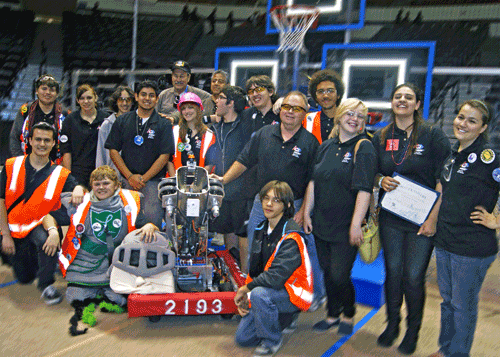More about the FIRST programs for young people
BY JIM HARRISON
As you, hopefully, have seen from our article in December, Electronic Products Magazine is enamored with the group called FIRST. Our nation is facing a dearth of engineers, scientists, inventors, and technologists. High school students are just not very interested in science and engineering. I guess it has become old hat.

Recognizing this dilemma over 20 years ago was Mr. Dean Kamen, and in his passion and determination to help young people discover the excitement and rewards of science and technology he started FIRST (For Inspiration and Recognition of Science and Technology). His vision is “To transform our culture by creating a world where science and technology are celebrated and where young people dream of becoming science and technology leaders.” FIRST programs in grade, junior, and high schools involve students in after-school projects in robotics.
The key to this successful organization is their volunteer mentors — engineers and scientists that give their time to advise the school teams. I decided to find a real-live mentor to interview and managed to track down Paul Koniarski, an electronics engineer at Qualcomm and mentor at Hilltop High School in Chula Vista, CA.
Paul’s been involved with FIRST since 2007, when he mentored the grade school version (FIRST Lego League) at his son’s 5th and 6th grade classes. He then followed his son into the middle school and then high school versions. His son is now a junior and still on a FIRST team.

Paul and the Hilltop High team. Paul is seen here at the center, fourth from the right.
Paul says the satisfaction that comes from working with a student on practical applications is definitely worth the effort. “When you see the kid light up about a real-world application they can solve, it’s extremely gratifying” he said. He said the teams routinely change from having 20% of them interested in going to college to 80%.
He suggests that if you want to join — pick an existing team with others that have some experience — it’s just a lot easier that way. His team meets for two hours a night, two nights a week. But when the project gets going, and the students want to win their contest vs other local teams, they spend a lot of other nights and weekends. And then, if they go to the finals in St. Louis, there’s use of vacation time and other commitments. The team at Hilltop has twenty student members and four mentors, two of which are teachers.
Paul noted that there were times when it was midnight and the kids were right there, completely involved, and you just can’t walk away. So be forewarned.
To check it out, go to this website, which will give you the e-mail address of your local contact: www.usfirst.org/regional-contacts. ■
Advertisement
Learn more about Electronic Products Magazine





